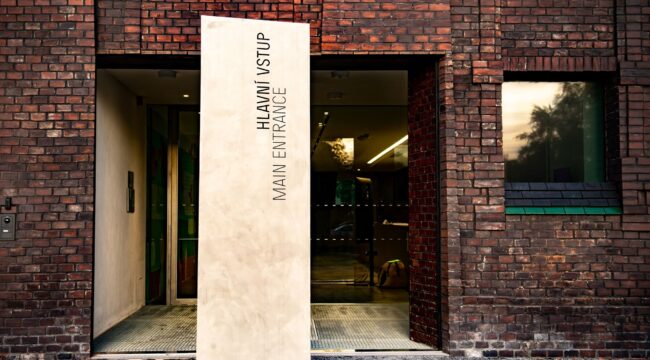Ostrava’s slaughterhouse conversion is ranked one of Europe’s most interesting architectural projects
The conversion of Ostrava’s 19th-century slaughterhouse to become the home of the PLATO contemporary art gallery has been ranked among the top five finalists in the EU’s Mies van der Rohe Award for contemporary architecture. The project faced challenging competition from 362 other buildings all over Europe, and it is the first-ever Czech building to reach this stage of the competition.
The reconstructed former slaughterhouse – today the PLATO contemporary art gallery. Photograph: Lukáš Kaboň
This year’s winner of the Mies van der Rohe Award is the Student House at the Technical University in Braunschweig, Germany. The results of the competition were announced by the international jury on 25 April 2024.
The EU’s Mies van der Rohe Award (EUMies) is given once every two years. The jury selects from a shortlist of nominated buildings designed by architects from European countries (not only EU member states). The prize was first awarded in 1988, and the most recent EUMiesAward (2022) went to the British studio Grafton Architects for its Town House at Kingston University.
Ostrava’s Mayor Jan Dohnal welcomed the achievement, seeing it as proof that Ostrava’s transformation is heading in the right direction: “To finish among the top five finalists in such a prestigious competition shows that Ostrava is a true beacon of modern Czech architecture, and is recognized as such on the international stage. We are absolutely delighted with this success, and we intend to continue along the same path, creating unique and architecturally valuable buildings which also respect the historical continuity of our city. The slaughterhouse conversion project symbolizes the connection between tradition and modernity, the old and the new. My deep gratitude goes out to everybody who played a role in the genesis and success of this project. Ostrava truly has something to be proud of.”
The construction work took place in 2020–2022. The design was created by the KWK Promes studio, headed by the Polish architect Robert Konieczny, who is considered a pioneer of “moving architecture”. This concept plays an important role in the design of the conversion, most visibly in the unique rotating walls which change the spatial perception of the interiors, bringing visitors closer to both the building and the exhibited works.
Robert Konieczny expressed his satisfaction with the award: “It’s a great success for everybody who was involved in the project – and of course that includes the City of Ostrava too. At least for the next two years, the PLATO gallery will be a focus of attention for many people throughout Europe, who will be watching with interest to see what happens there. And that in turn will lead to increased interest in Ostrava as a whole. It’s a great opportunity for us all – but it’s also a commitment, because we need to ensure that all the activities at the gallery are worthy models to follow. Being the best brings certain obligations.”
The slaughterhouse complex dates from 1881, with later additions and modernizations in 1890 and 1924–27. It was closed in 1965, after which it became derelict. It was declared a cultural monument in December 1987 (the tower building) and September 1994 (the tower itself plus the adjacent buildings).
Today, the former slaughterhouse has become a vibrant centre of Ostrava’s contemporary art scene – the PLATO gallery. Director Marek Pokorný explained that the conversion has not only provided an inspirational venue, but has also brought new opportunities: “It’s not entirely common to see such a powerful architectural gesture successfully combined with functionality, enabling the resulting space to cater for a range of diverse artistic voices. The architect Robert Konieczny and his team have lent their own artistic voice to the project, creating a very striking framework for what we do at the gallery, but also initiating some highly innovative changes in our approach to how a contemporary art gallery can inspire our projects and generate public interest.”
The conversion project has also won other awards since its completion. Last year, its accolades included two Czech prizes – the National Heritage Institute’s Patrimonium pro futuro award for heritage management, and the 2023 Architectural Grand Prix for the best reconstruction project.




